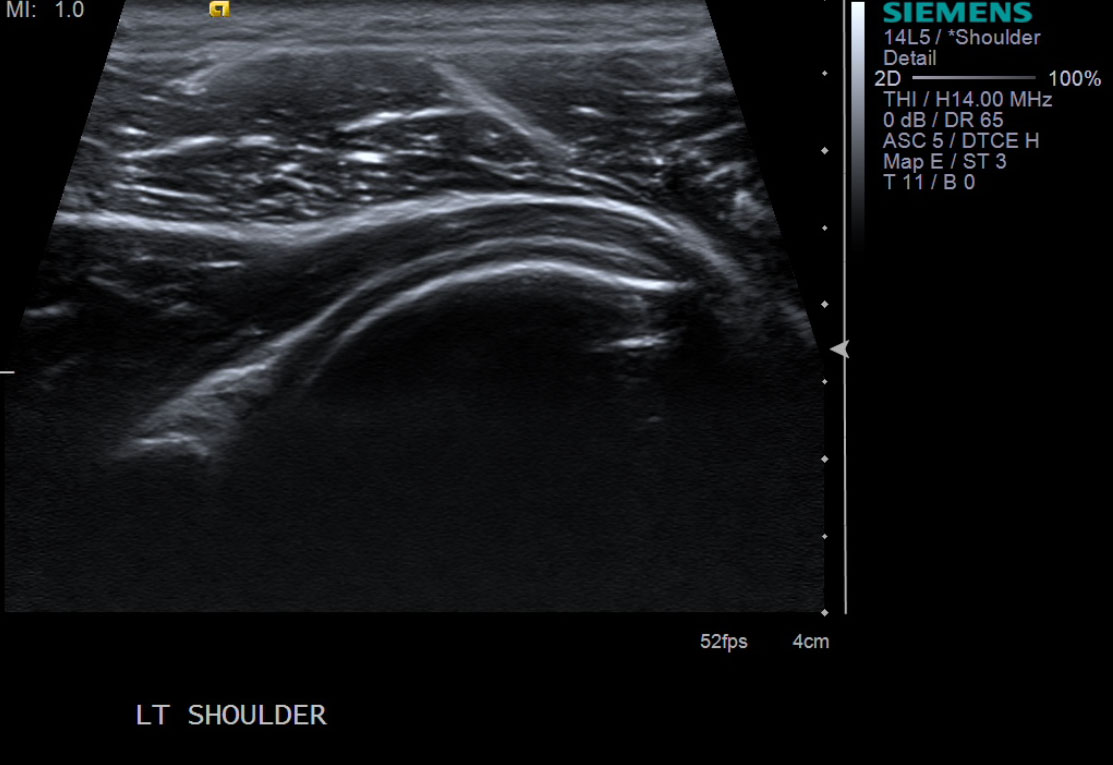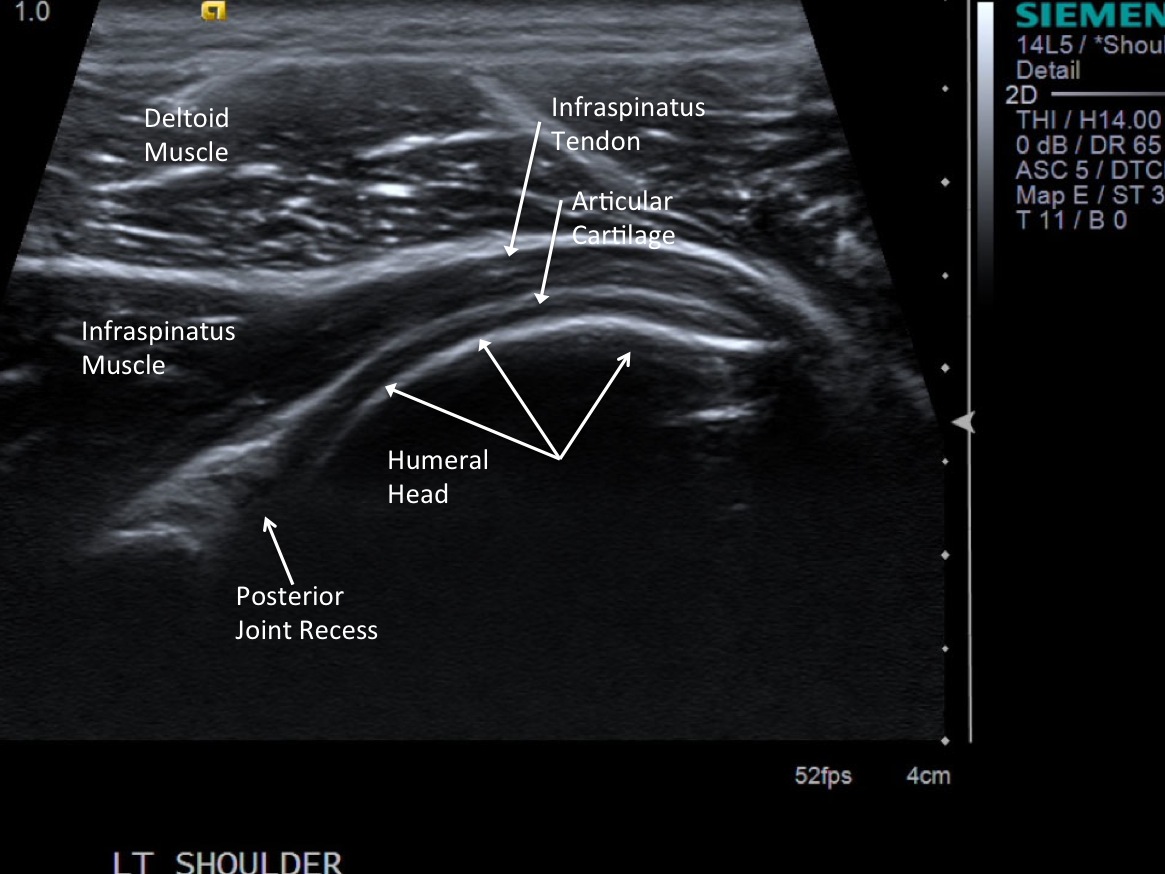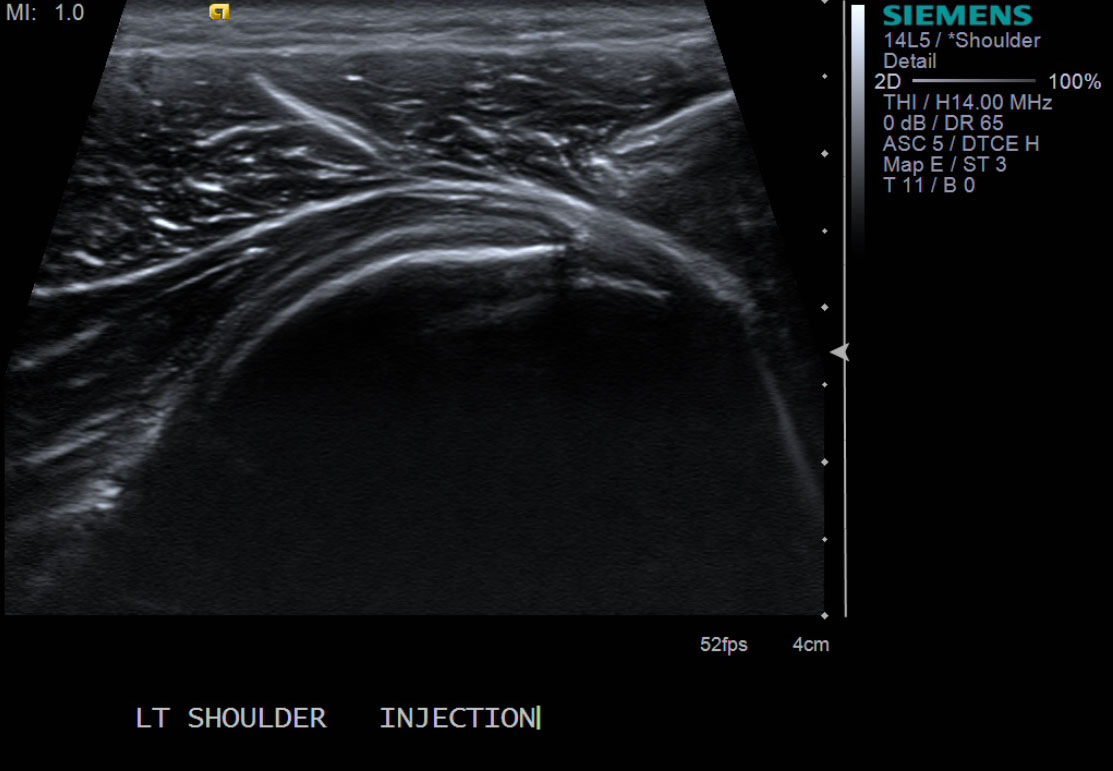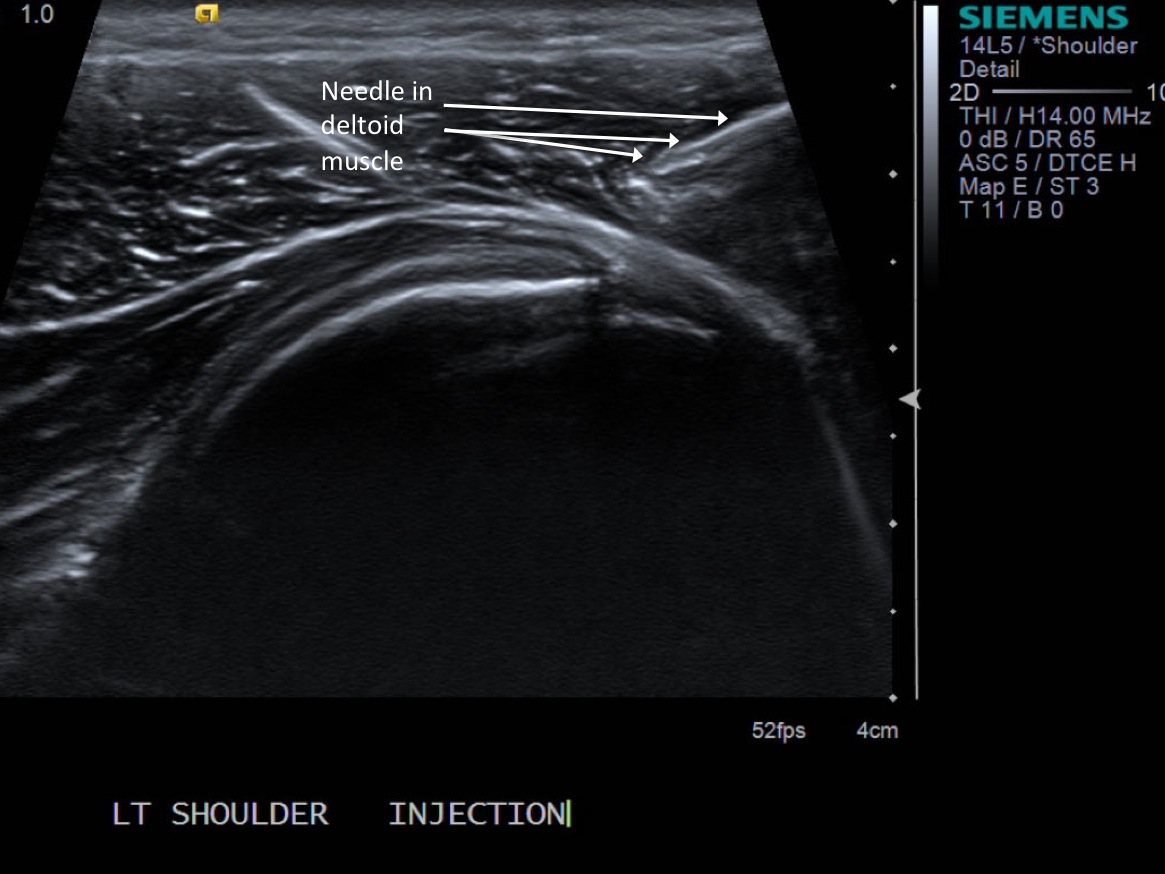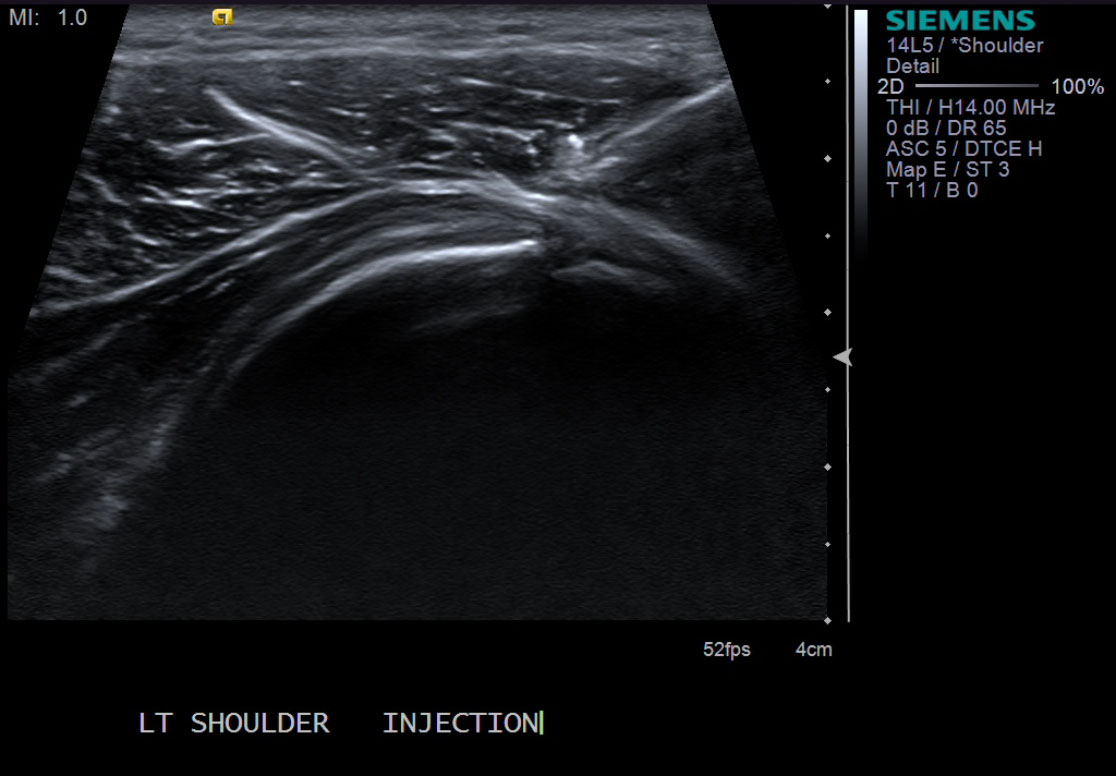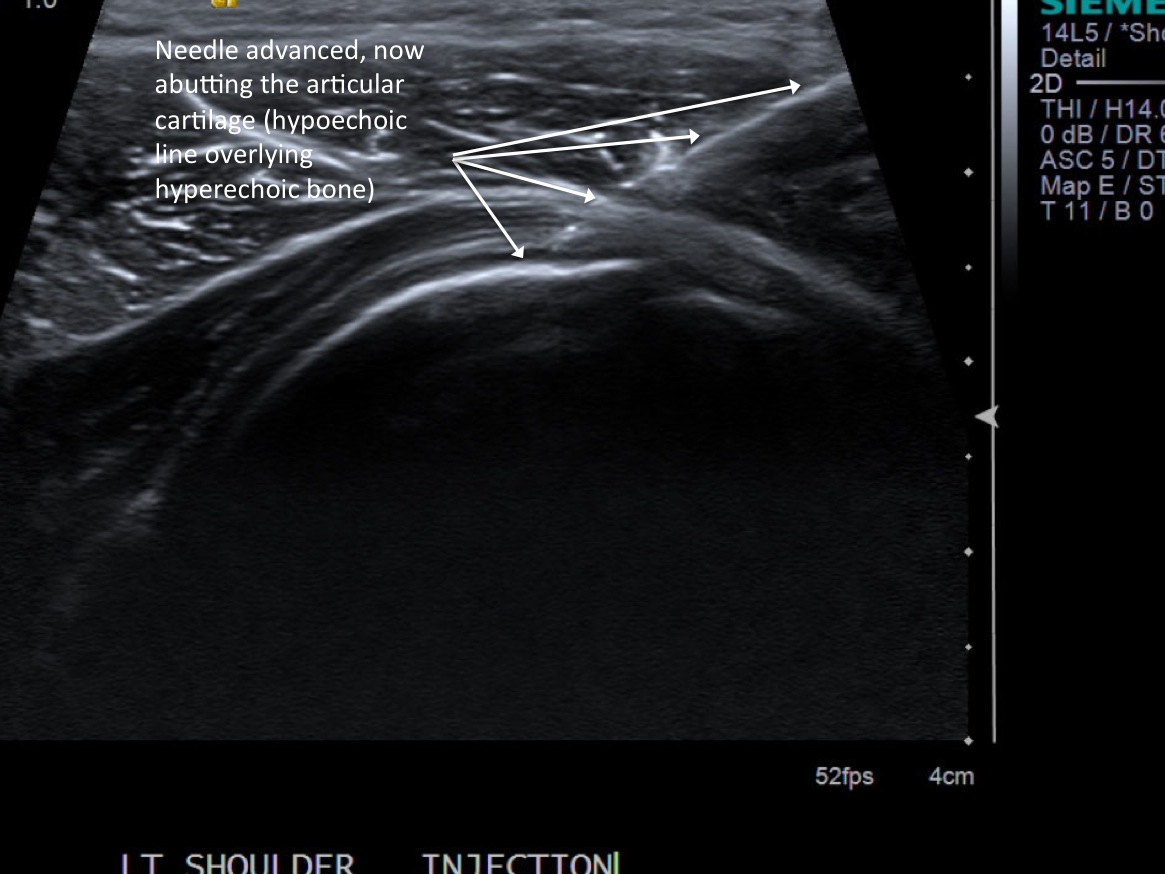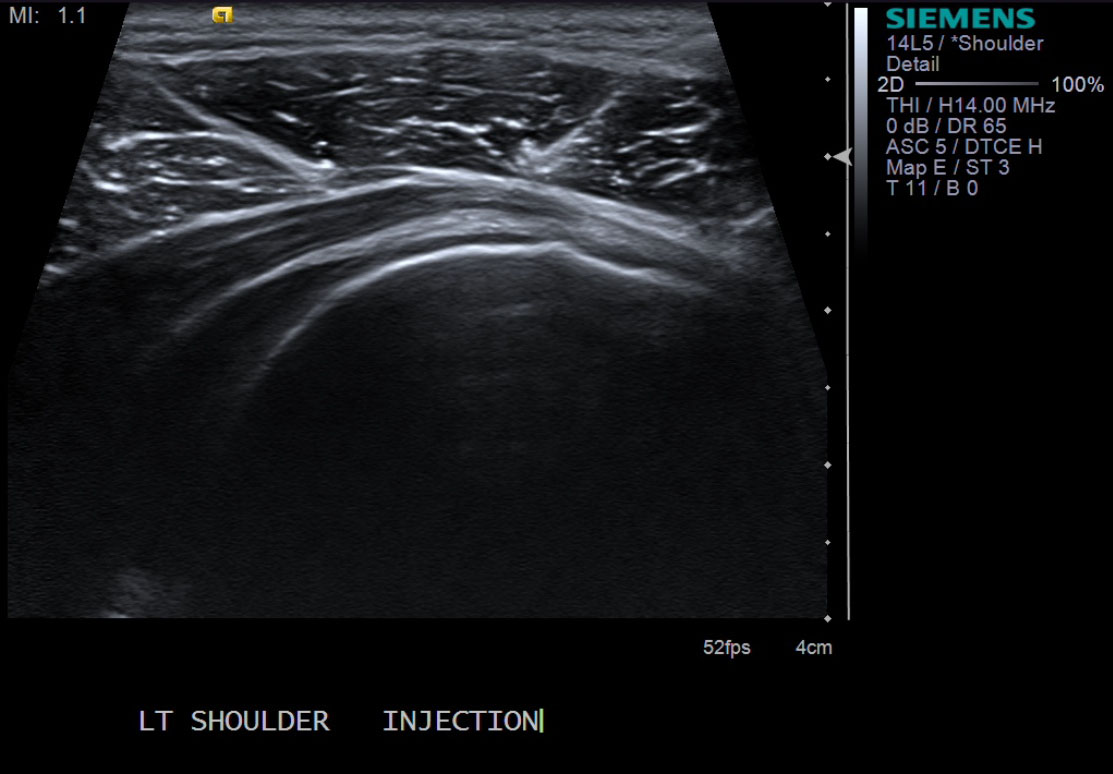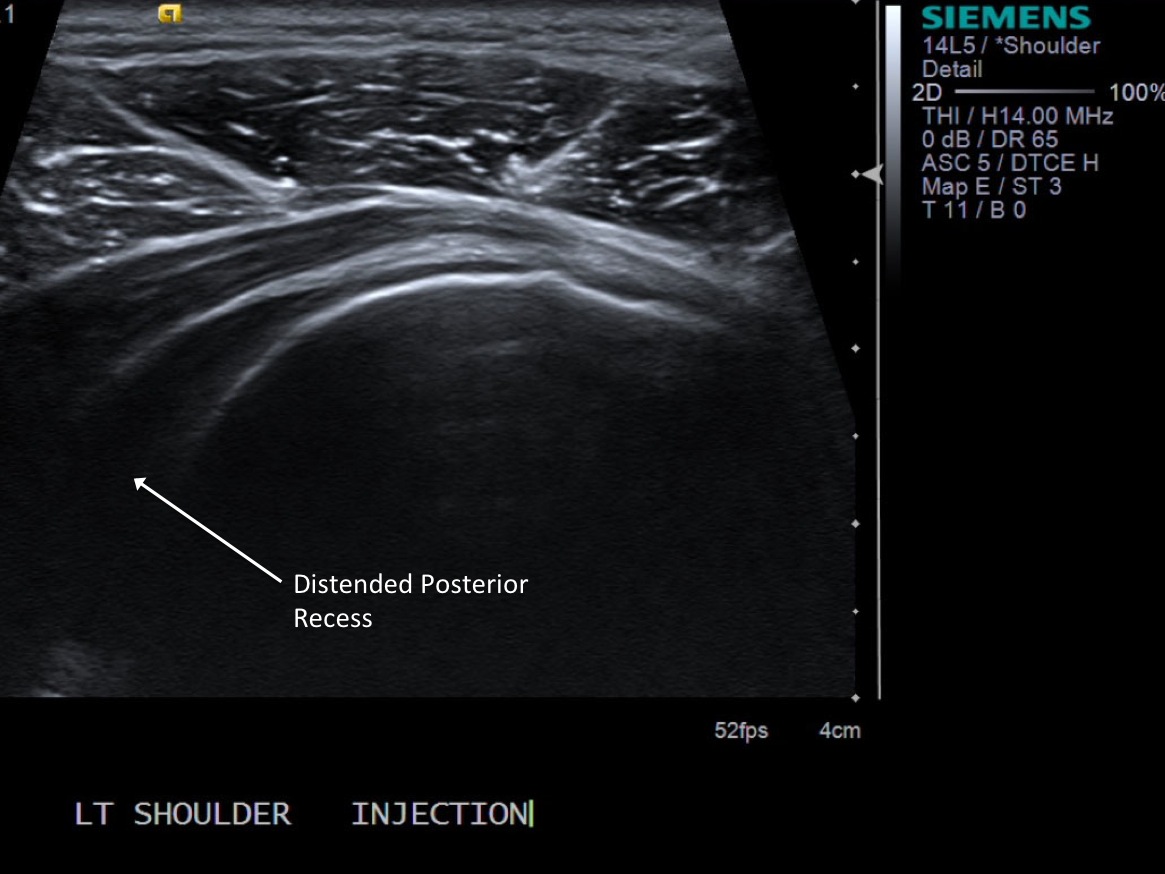Shoulder Arthrogram Injection
Equipment and Medications
|
|

Equipment 
Medications |
Procedure Instructions:
| Instructions | |
| 1. Standard pre procedure workup (consent, indications, contraindications, allergies) | |
| 2. Position patient with lateral decubitus with contralateral shoulder down with arm in cross adduction. |  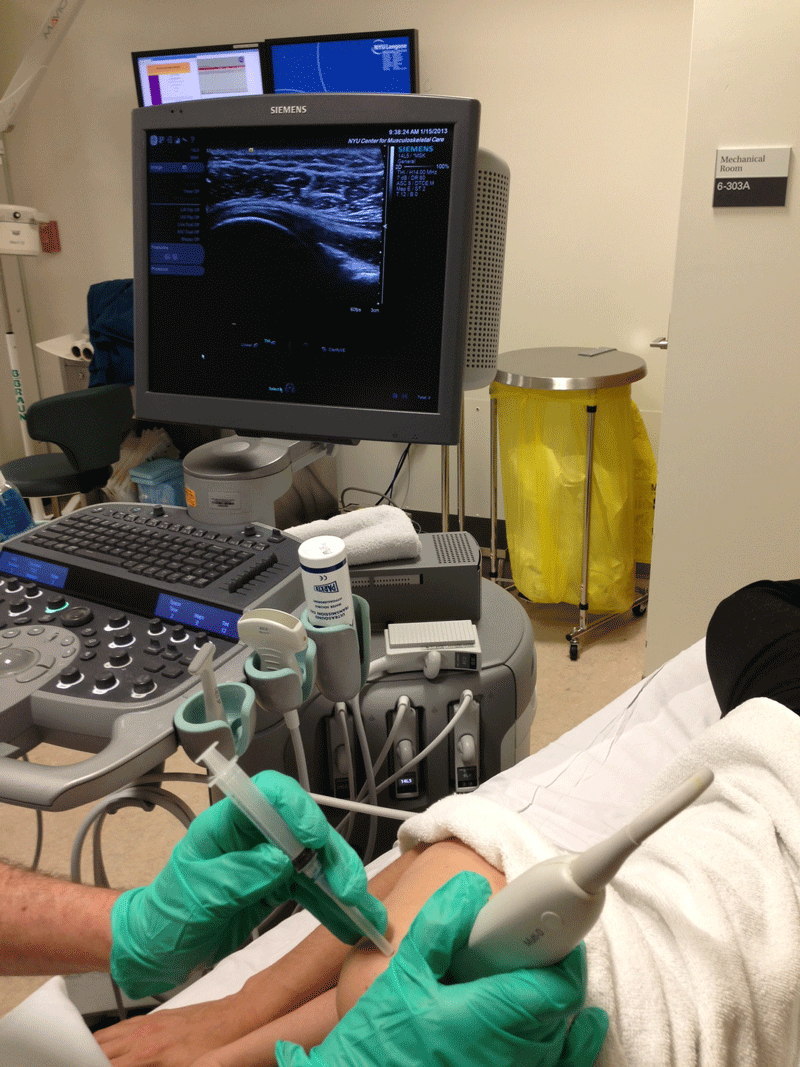 |
| 3. Scan patient looking for the posterior glenohumeral joint space. Image at the level of the infraspinatus tendon insertion in longitudinal orientation. Position probe so you can inject from anterior. | |
| 4. Mark needle site and probable injection site. | |
| 5. Prep patient; betadine or chlorhexidine x 3. Clear wide area. | |
| 6. Place sterile drape and probe cover. | |
| 7. Draw up medications as listed in equipment list. | |
| 8. Place sterile ultrasound probe on skin and find site of injection again and inject 1% lidocaine superficially via the 25g 1.5” needle. | |
| 9. Exchange 25g 1.5" needle for the 22g 3.5” needle | |
| 10. Advance needle under ultrasound guidance to the level of the articular cartilage (hypoechoic line). | |
| 11. Test inject to see if easy flow with 1% lidocaine. Look for accumulation of fluid or microbubbles in overlying soft tissue. If no resistance and see distention of the joint space inject 3-5cc of Lidocaine 1%. If there is resistance, step off articular cartilage slightly and try again. |
|
| 12. Exchange Lidocaine 1% for Normal Saline and Gadolinium mixture. Inject full 10cc of mixture. | |
| 13. Document distention of the posterior joint recess with ultrasound. |
|
| 14. Clean off area and place bandage over skin | |
| 15. Send patient for MRI. |
References
- Zwar, Read, and Noakes. "Sonographically Guided Glenohumeral Joint Injection." AJR July 2004 vol. 183 no. 148-150.
